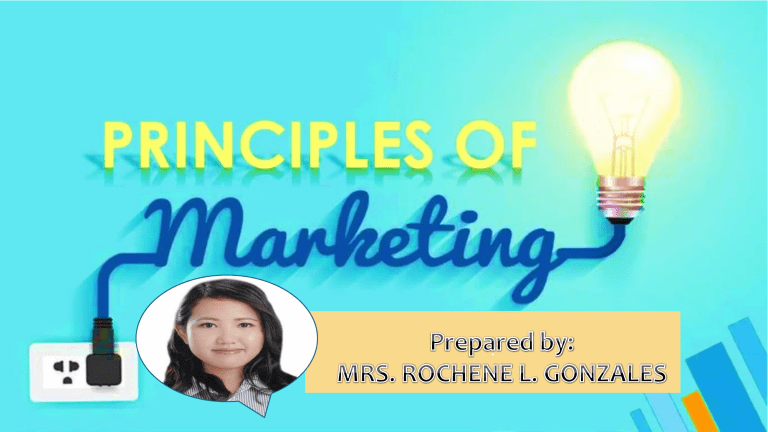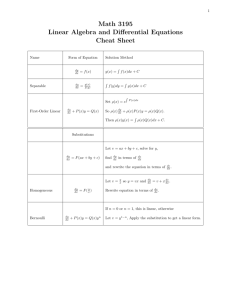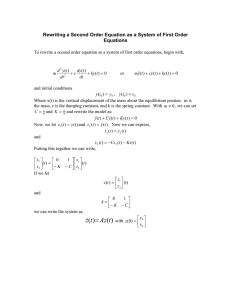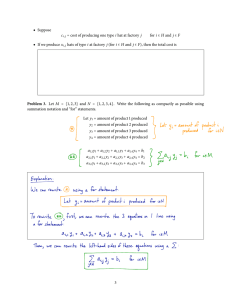
. Most Essential Learning Competency: After going through this lesson, you are expected to achieve: 1. Define and understand marketing, concepts and principles; 2. Understand the goals of marketing and its social effects; and 3. Discuss the goals of marketing. REWRITE THE PAST 1. works toward the organization’s goals using its resources in an effective and efficient manner. R ANSWER 1. works toward the organization’s goals using its resources in an effective and efficient manner. M A N A G E R REWRITE THE PAST 2. A social science that deals with the allocation of scarce resources to meet the unlimited human needs and wants C ANSWER 2. A social science that deals with the allocation of scarce resources to meet the unlimited human needs and wants E C O N O M I C S REWRITE THE PAST 3. ______are desires for goods and services we would like to have but do not need. A ANSWER 3. ______are desires for goods and services we would like to have but do not need. W A N T S REWRITE THE PAST 4. means an expression of financial value of all consumed inputs when producing goods, services or any other supporting activities or processes in the company C ANSWER 4. means an expression of financial value of all consumed inputs when producing goods, services or any other supporting activities or processes in the company C O S T REWRITE THE PAST 5. is a person or group of people who are the final users of products and or services generated within a social system. O E ANSWER 5. is a person or group of people who are the final users of products and or services generated within a social system. C O N S U M E R Definition of Marketing Marketing is the creation and communication of value to customers. It involves the customer’s maintenance of relationships that should last for lifetime. It is the link between society’s material requirements for its needs and wants. Marketing must satisfy human needs and wants through the exchange process and the building of long-term relationships. CONCEPT AND MARKETING PRINCIPLES Primary Purpose of Marketing ➢ Capturing the attention of your target market ➢ Persuading a consumer to purchase your product ➢ Providing the customer with a specific, low-risk action that is easy to take The Role of Marketing 1. 2. 3. 4. 5. 6. 7. 8. Identify customers. Satisfy customers. Retain customers. Creation of products and services. Distribution. Pricing Promotion Selling Marketing Goals Goal: Attract new customer by promising superior value and keep and grow current customers by delivering satisfaction. Two Interacting Components of Marketing COMPANY MARKET A goal is a dream with a plan and a deadline. The marketing goal is a specific, measurable, attainable, relevant, and time-bound metric (SMART) that drives every marketing effort. Principles of Marketing Marketing principles or principles of marketing are agreed-upon marketing ideas companies use for an effective marketing strategy. They are the principles upon which we build product promotion strategies. We can use the marketing principles for the effective promotion of either goods or services. Marketing Mix TRADITIONAL APPROACHES Traditional marketing refers to any type of marketing that is not online. Traditional Marketing Concepts 1. The Production Concept 2.The Product Concept 3.The Selling Concept The Production Concept This concept –oldest of the concepts in business. It holds that consumers will prefer products that are widely available and inexpensive. Managers focusing on this concept concentrate on achieving high production efficiency, low costs, and mass distribution. They assume that consumers are primarily interested in product availability and low prices. This orientation makes sense in developing countries, where consumers are more interested in obtaining the product than in its features. The Product Concept This orientation holds that consumers will favor those products that offer the most quality, performance, or innovative features. Managers focusing on this concept concentrate on making superior products and improving them over time. The Selling Concept This concept assumes that consumers typically show buying inertia or resistance It also assumes that the company has a whole battery of effective selling and promotional tools to stimulate more buying. Most firms practice the selling concept when they have overcapacity. They aim to sell what they make rather than make what the market wants. TRADITIONAL APPROACHES Examples: 1. Print ads (magazines, newspapers, coupon books) 2. Broadcast (radio, television) 3. Direct mail (postcards, brochures, letters, fliers 4. Phone 5. Outdoor advertising like billboards 6. Referral (word-of-mouth) Contemporary Approach The focus of contemporary marketing extends beyond merely attracting new customers. Today's marketing strategies also include instilling customer loyalty and a sense of brand devotion, thereby creating a more sustainable business model. Contemporary Marketing 1. The Marketing Concept 2. Relationship Marketing Concept 3. Societal Marketing Concept The Marketing Concept consists of the company being more effective than competitors in creating, delivering, and communicating customer value to its selected target customers. The marketing concept rests on four pillars: target market, customer needs, integrated marketing, and profitability The Relationship Marketing Concept It is believed that all marketing activities are to establish, maintain, and strengthen meaningful long-term relationships with customers. Extensive customer databases are created, maintained, and updated. Customer profiles, purchase habits, and preferences are tracked and monitored. This is to ensure that customer’s needs are fulfilled, and the relationship with them is maintained. The Societal Marketing Concept This concept holds that the organization’s task is to determine the needs, wants, and interests of target markets and deliver the desired satisfactions more effectively and efficiently than competitors it holds that this all must be done in a way that preserves or enhances the consumer’s and the society’s well-being EVALUATING LEARNING Word Search: Identify the terms described below. Search and encircle the words from the box after writing your answer in the blank provided. You can find the words in vertical, horizontal and diagonal. M S T M W M O R D R A E W A A U A M A R K E T I N G R R R R S R I S M R S E T K T S K G K Y H A E H E Y E G W E E E T A N N A D E T J F T R T E W D D R S N I E C W F I I A S R O N M N T B R M N A N A Y N E F G U N U U G Q T G S F T E M X H P R M T S O G S R D I S U E X C H A N G E T H X P R O M O T I O N S N M S W R F G H F H K I O K O S H A R O N F S A N C H E ASSIGNMENT : WRITE YOUR ANSWER IN YOUR NOTEBOOK (INDIVIDUAL ACTIVITY) As a marketer, how can you increase your customers’ assessment of your products and services? 2 PARAGRAPHS GROUP ACTIVITY (FOR NEXT MEETING’S PRESENTATION) Ask the students to form into four groups for the Green Marketing Activity. Green marketing is a contemporary approach of marketing where products are produced in an environmentally friendly way. They will think and promote of a unique product or service that is environment friendly. Marketing Mix Ideal Description Product or Service Promotion People (Target market)



